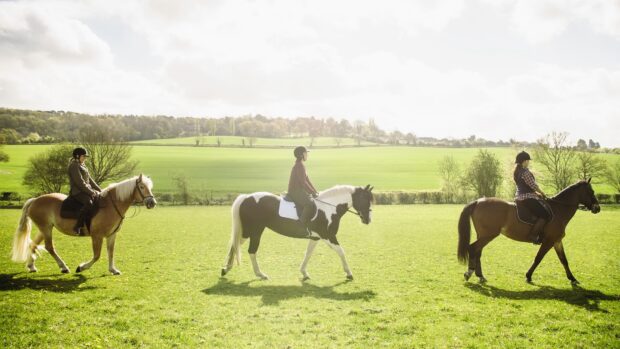Jason Webb of Australian Horse Training is a renowned UK-based horse trainer with a passion for starting young horses, solving equine problems and teaching riders of all abilities and ambitions develop and strengthen the partnership they have with their horses. Here Jason helps one H&H forum user with a napping problem
Q: “I have a seven-year-old mare. We do show jumping and cross-country regularly and she can love it and fly round or she can just refuse to walk and when I try and push her forward she will either go backwards or refuse to move. When she starts to walk backwards she will kick anything in her way. This is becoming a big problem because I know she is napping badly and I can’t do anything to stop it. She will do it at any time during a competition but it is mostly when leaving other horses.
“How can I stop her doing this? I’ve slightly improved the problem by giving her regular breaks, I have upped her food to a large amount of competition mix and sugar beet which makes her move and I wear spurs (otherwise she won’t move at all at any time). I have also had the back lady, saddle fitter, vet and farrier all out to look at her and she’s perfectly fine. She started competing about a year ago and she always does it.”
A: Hi reader,
I’m not sure I can “fix” your problem without seeing you work with your mare, but I hope to give you some exercises to try and some food for thought. One of the most detrimental things you can do with a napping horse, or one that doesn’t respond well to the leg, is to keep kicking harder. The horse has the idea of going backwards and you put energy into it by kicking, so she will go backwards faster! Before kicking, you have to change your horse’s idea from going backwards to forwards. You also need to remember that every time you kick and you don’t get a forward response, you are teaching your horse to ignore your cues!
Continued below…
Related articles:
- H&H forum: find out what H&H readers suggested
- Find out more about how you can stop your horse napping
Therefore, the first thing you need to address is the response to your leg. Do this in an environment where she usually works well and make sure every cue to go forward from you follows this pattern;
1. Give a light cue to ask, “please go forward”
2. The horse should go forward within one or two seconds
3. If they don’t, you need to “tell” by using more leg or flick of a whip where you’re leg would be.
I teach people to say the following out loud when they ask a horse for forward, “Please, go forward, now!” This puts the sequence into a rhythm. I also get them to do some mounted games type activities to put a bit of fun back into their riding and both the rider and horse thinking more forward.
In order to stop your mare going backwards, you need to be able to “disengage the hind end”. This is slightly different to a turn on the forehand because your horse should bend during the exercise. It is when you move your horse’s hind legs around their front legs using just your inside aids and it is a movement that everyone needs up their sleeve as it can get you out of trouble in lots of different situations such as napping backwards, bucking, bolting and shying.
I think of disengaging the hind end as putting your horse into “neutral”. If you add no energy to this movement but make sure every time they do move, their back leg steps around their front ones through use of your inside rein, they will eventually stop. When they stop, let them stand. However, if you then want to convert neutral into “forward”, keep moving the hind legs around but add energy through using your inside leg. When you feel your horse take a couple of steps forward within the circle, allow your horse to straighten and ride her forward with no rein contact so she knows that is what is you want from her.
You also write that your mare naps back to other horse. With problems like this, I like to use a little reverse psychology; make it hard work when she is around other horses and give her rest when she is away from them. You can practice this with some friends at home before going to an event. Keep your horse doing small circles or serpentines with lots of changes of direction around the other horses and when you feel her tire, trot her away from them and let her rest facing away from them. If you repeat this exercise in different environments, I am sure it will help you on competition day.
There are other lessons that could be used but these are a good place to start but be aware that sometimes these problems need a professional to get you started.
Good luck!
For all the latest news analysis, competition reports, interviews, features and much more, don’t miss Horse & Hound magazine, on sale every Thursday.




